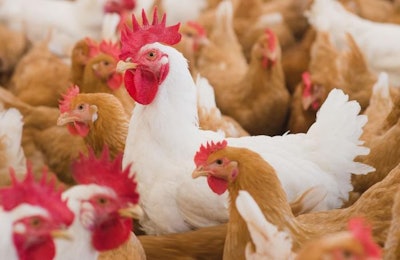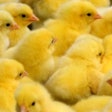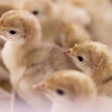
A new decade is here, but the broiler industry will face a familiar problem in slower-growing broiler genetics.
A new study
This year, the University of Guelph is expected to publish a much-anticipated study that’s expected to help establish key benchmarks for broiler animal welfare. The Guelph study will be closely examined by the world’s poultry industry and third-party welfare certification organizations. It could play a large role in determining whether the speed in which a chicken gains weight is correlated to its overall health and welfare outcomes.
Thus far on an academic level, slower-growing birds have been panned as an environmental and practical disaster. In theory, slower-growing birds use significantly more resources to produce the same amount of protein. By comparison, conventional broiler breeding and housing have consistently reduced the resources needed to produce protein over the past 60 years.
A commercial trial
In the U.S., one company already tried the slower growing bird themselves and they’ve since moved on. Farmers Pride Inc., better known as Bell & Evans, in 2019 switched to a hybrid breed because they could not raise a commercially successful slower-growing bird.
In 2017, Bell & Evans said it would switch its operations to a slower-growing bird and it put the birds in the field soon afterward. The birds presented health and feed conversion issues that forced the company to switch to a proprietary, hybrid breed in 2019. The new breed combines some aspects of their slower-growing bird with some of a conventional broiler
The company’s owner and president, Scott Sechler, said the impact on the bottom line came when it was time to market the chicken. Although there is much talk, no one, he said, is willing to pay any more for a slower-growing chicken right now. So, Bell & Evans sold its product at a loss.
Moreover, he said, if Bell & Evans can’t succeed with a slower-growing bird, then it’ll be hard for anyone to succeed on a commercial scale. I believe him. From what I saw when I visited, Bell & Evans goes above and beyond from the hatchery to packaging – and charges an appropriate premium to its customers – to assure it produces what it considers to be the best possible product.
Egg farmers already struggle
That reminded me of the horror show America’s egg farmers are sitting through. In the middle of the last decade, the egg industry was saddled with an unfunded mandate to switch its operations to cage-free. The customers committed to purchase or sell only cage-free, so the egg farmers switched both their housing infrastructure and their breeds.
Now, the cage-free eggs are rolling down the belt – at significantly higher cost for the producer – and no one is willing to pay any more for them than a conventional egg.
Fantasy versus reality
The commonality in these situations is the genetics switch was motivated by an artificial market force: animal welfare activists. In the cage-free example, these groups successfully exerted pressure on key figures and organizations in a way that lead to chain reaction. In a short period of time, cage-free went from a fringe product to an industry standard. It’s a roadmap to success for future campaigns.
Both cage-free eggs and slower-growing broiler meat are a hard sell because there is no mass demand for those products. Moreover, there is certainly not enough willingness in the market to pay a premium to justify the expense of producing the products.
In short, if and when the poultry industry brings these products to market, they will be losers. The industry will spend more, pollute more, and be forced to charge more all while losing money. The only winners will be the activists.


















